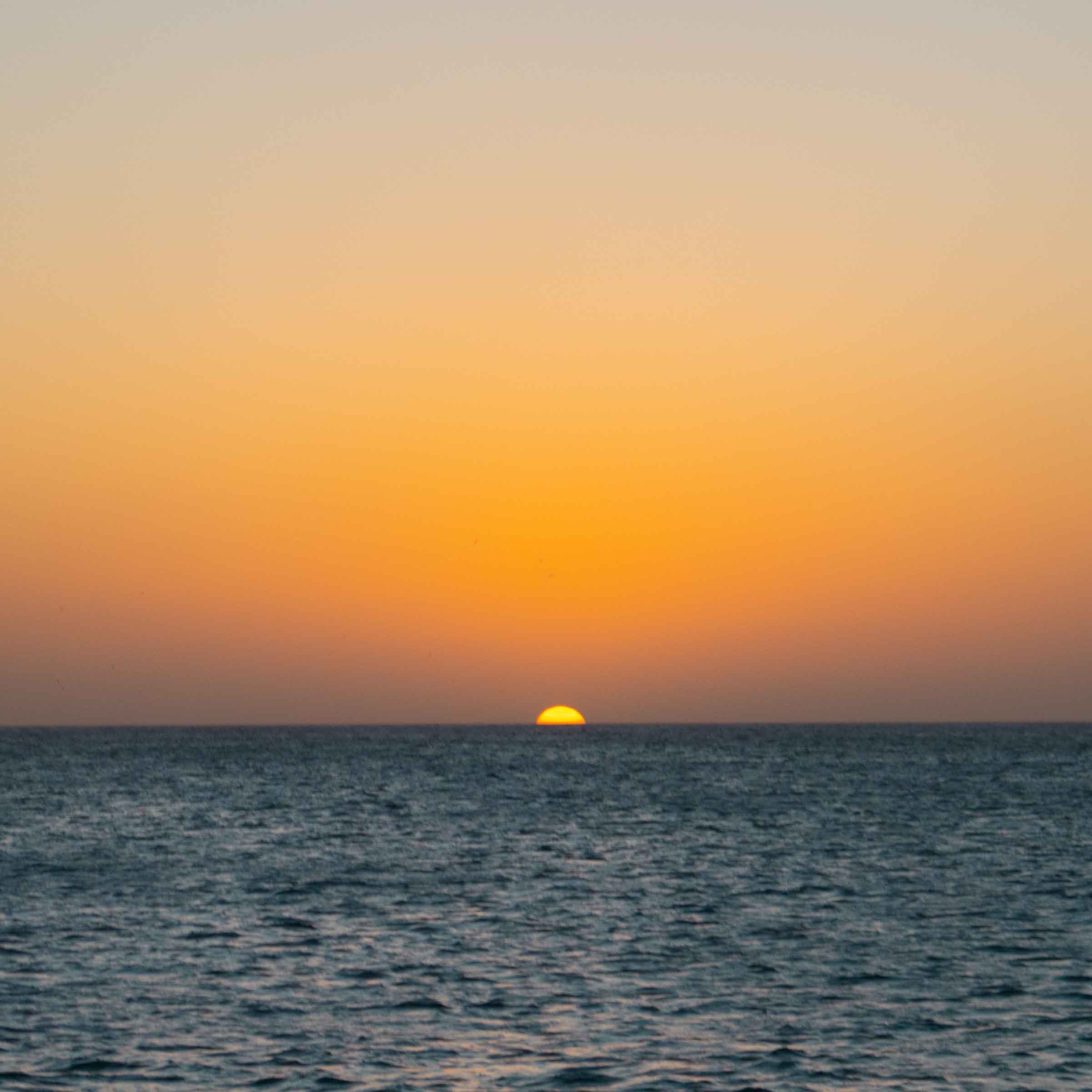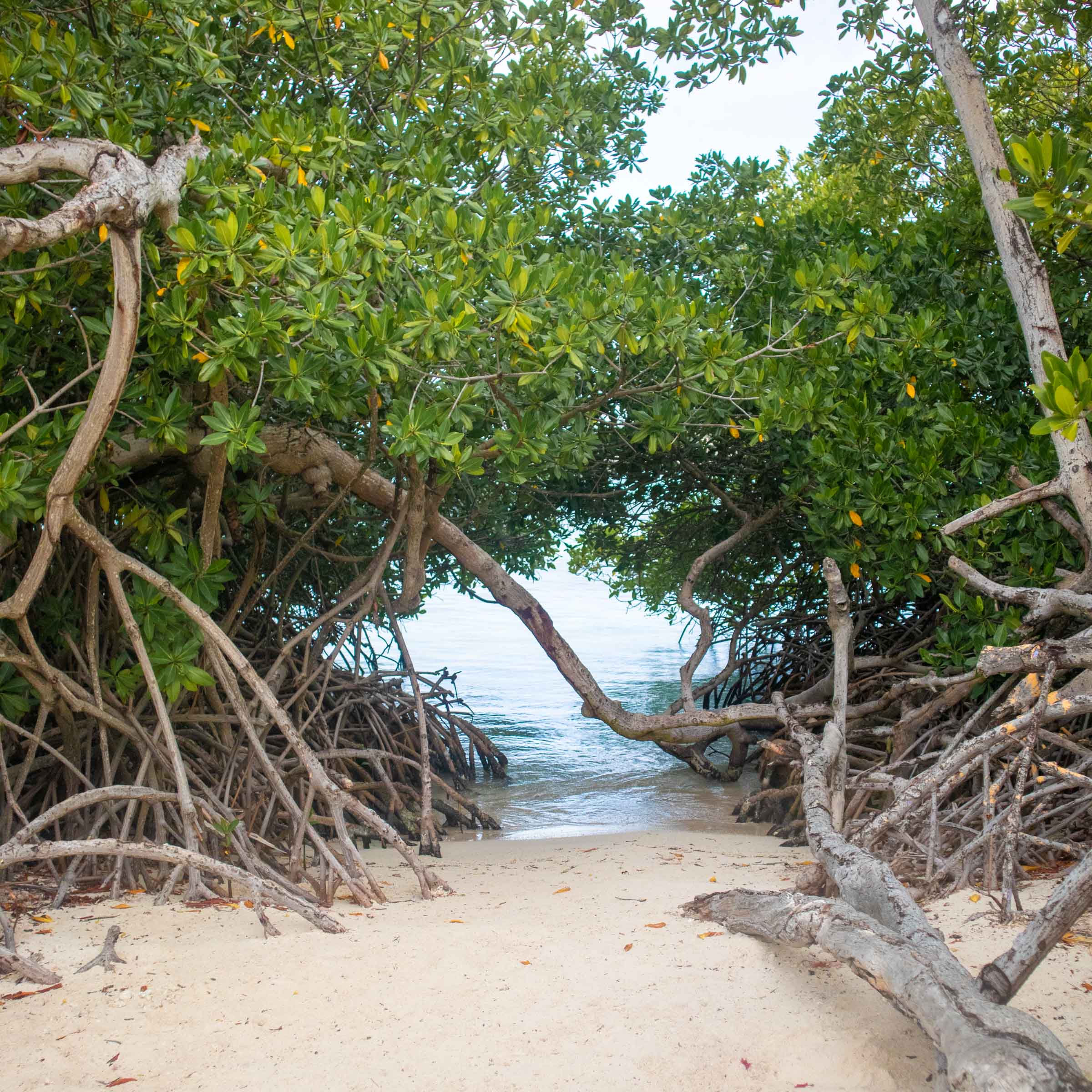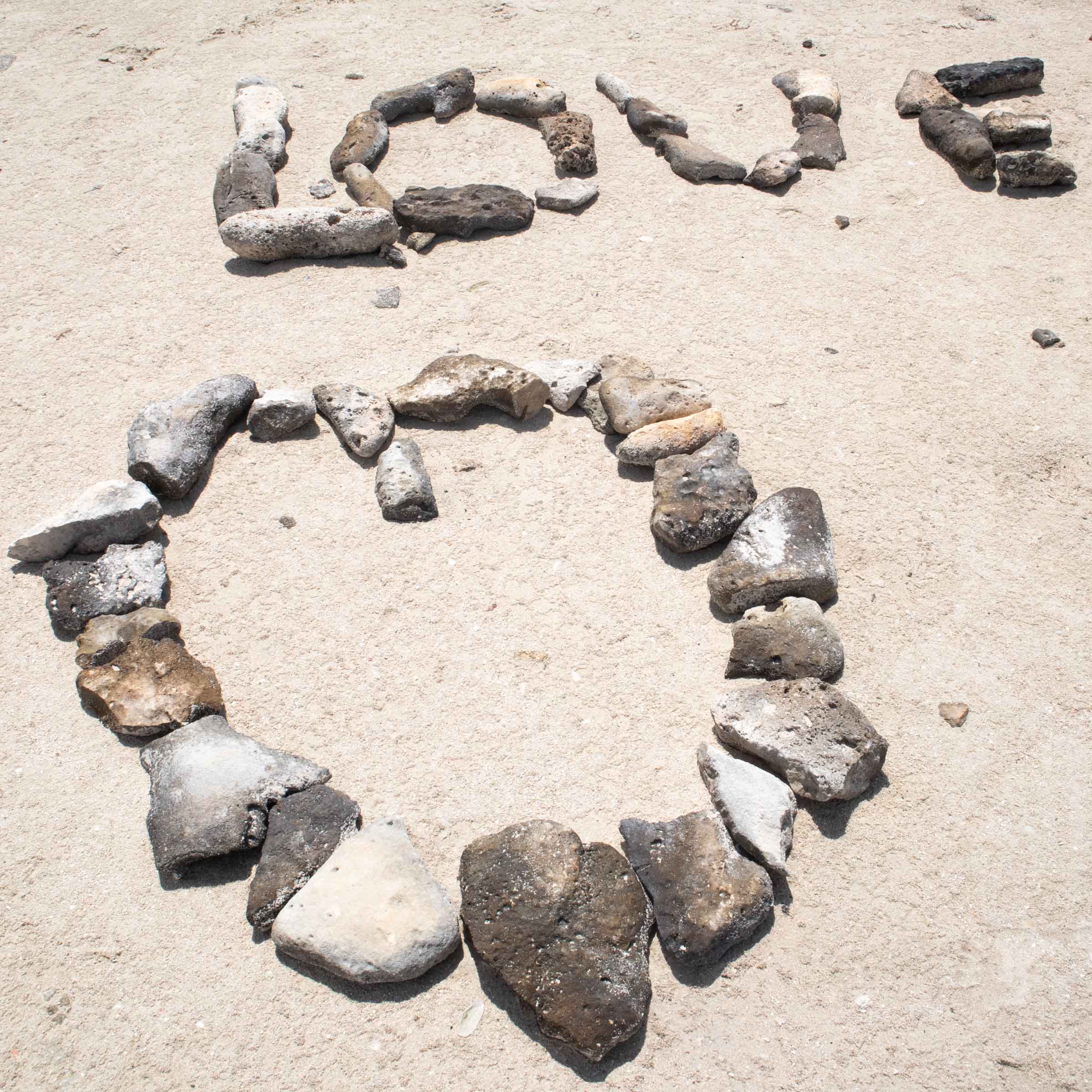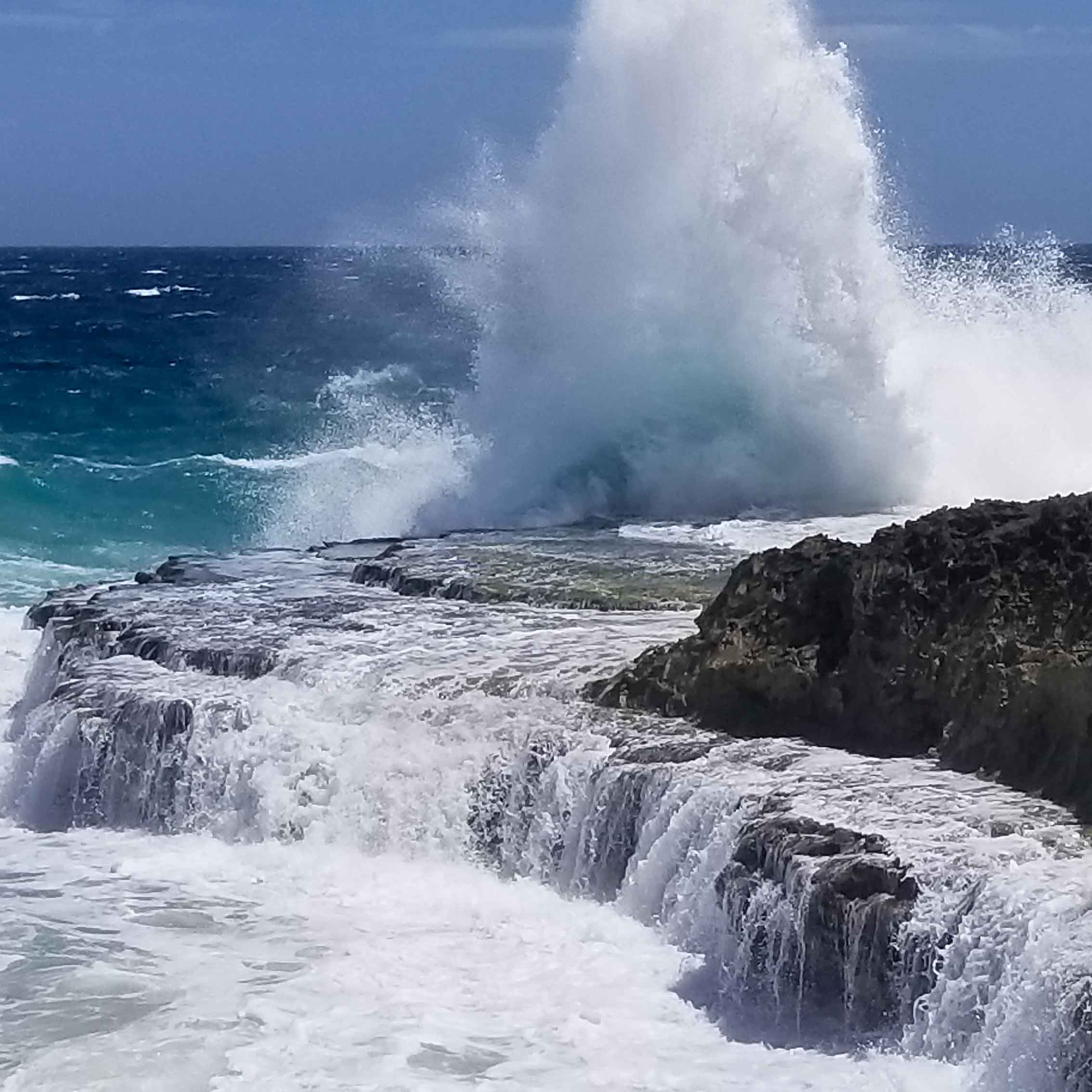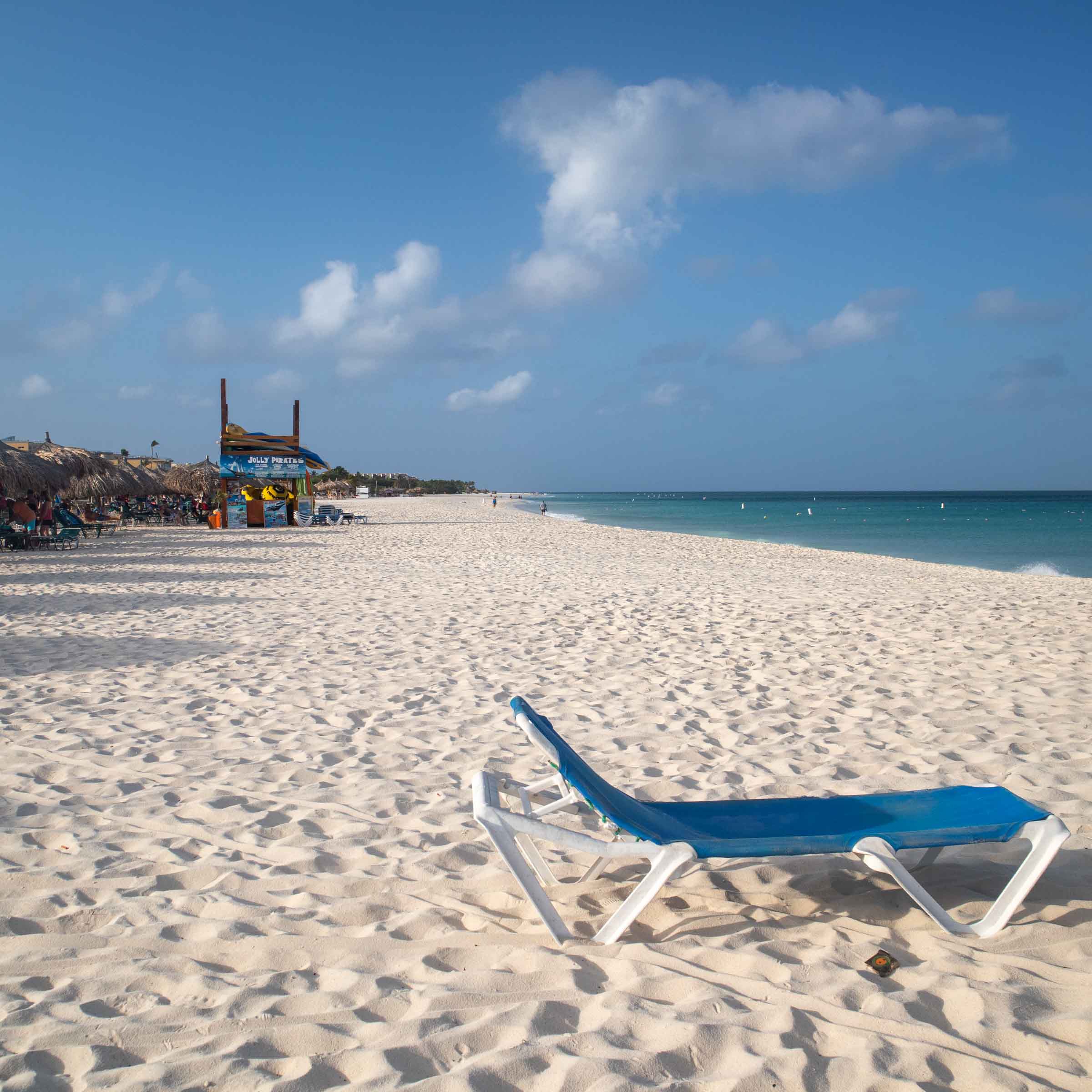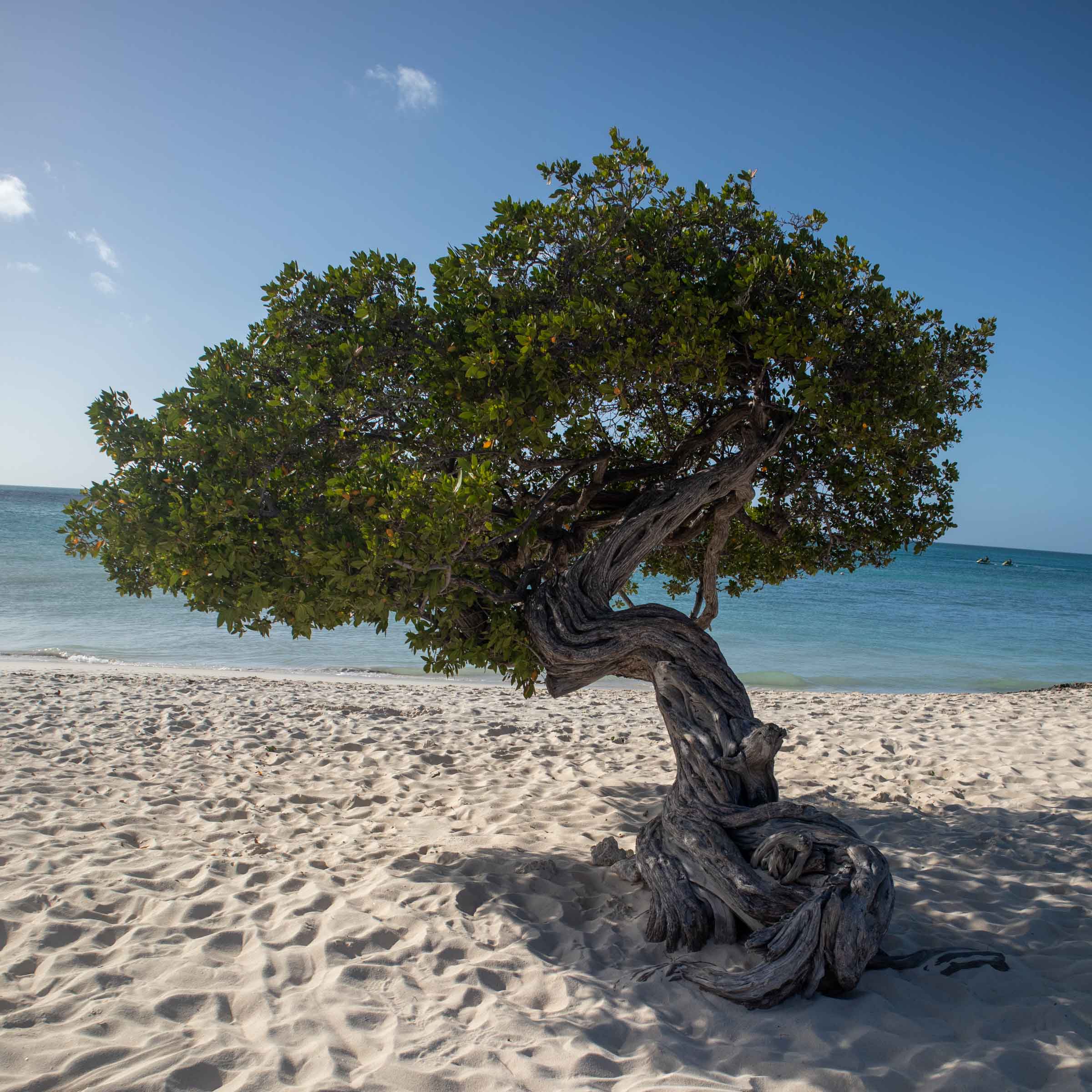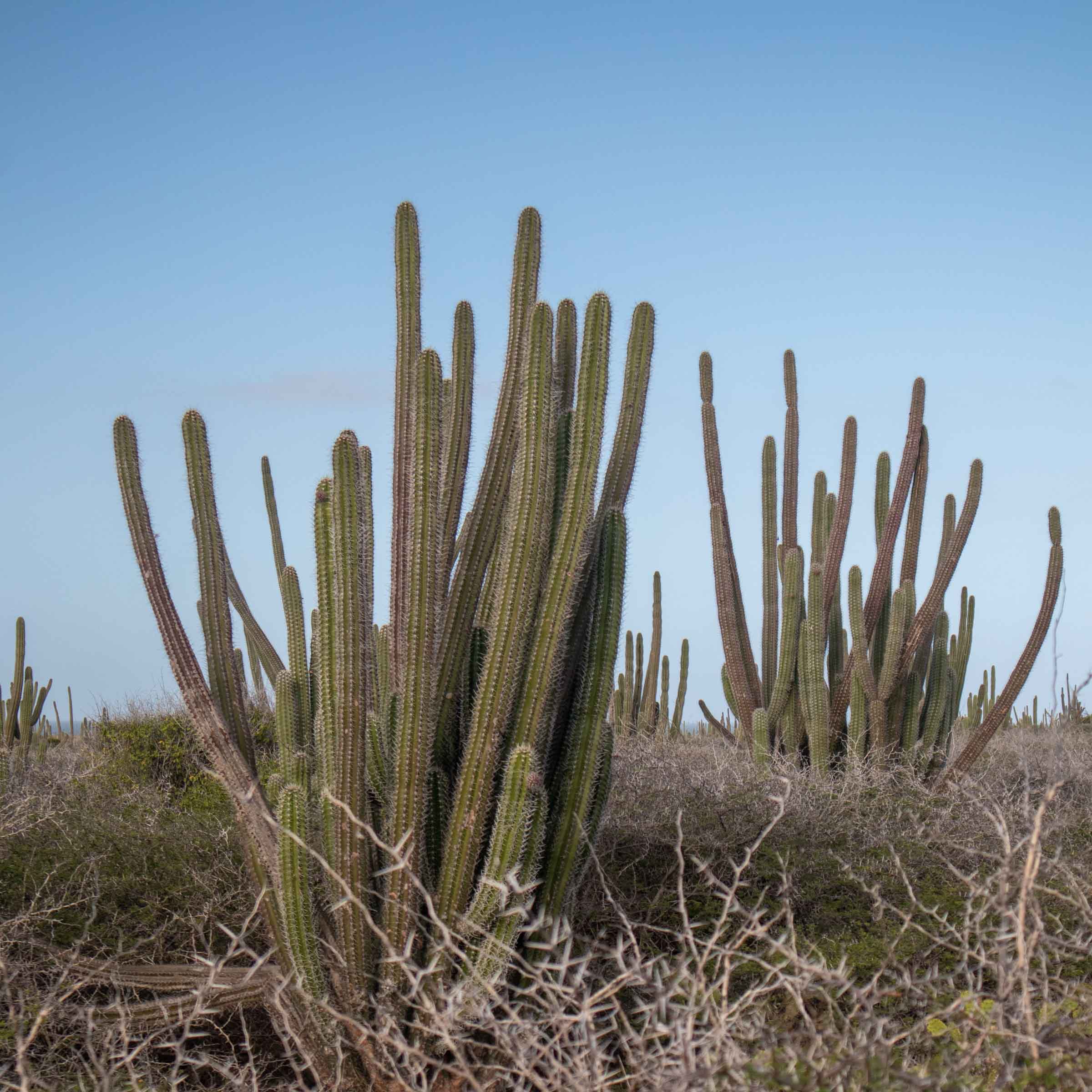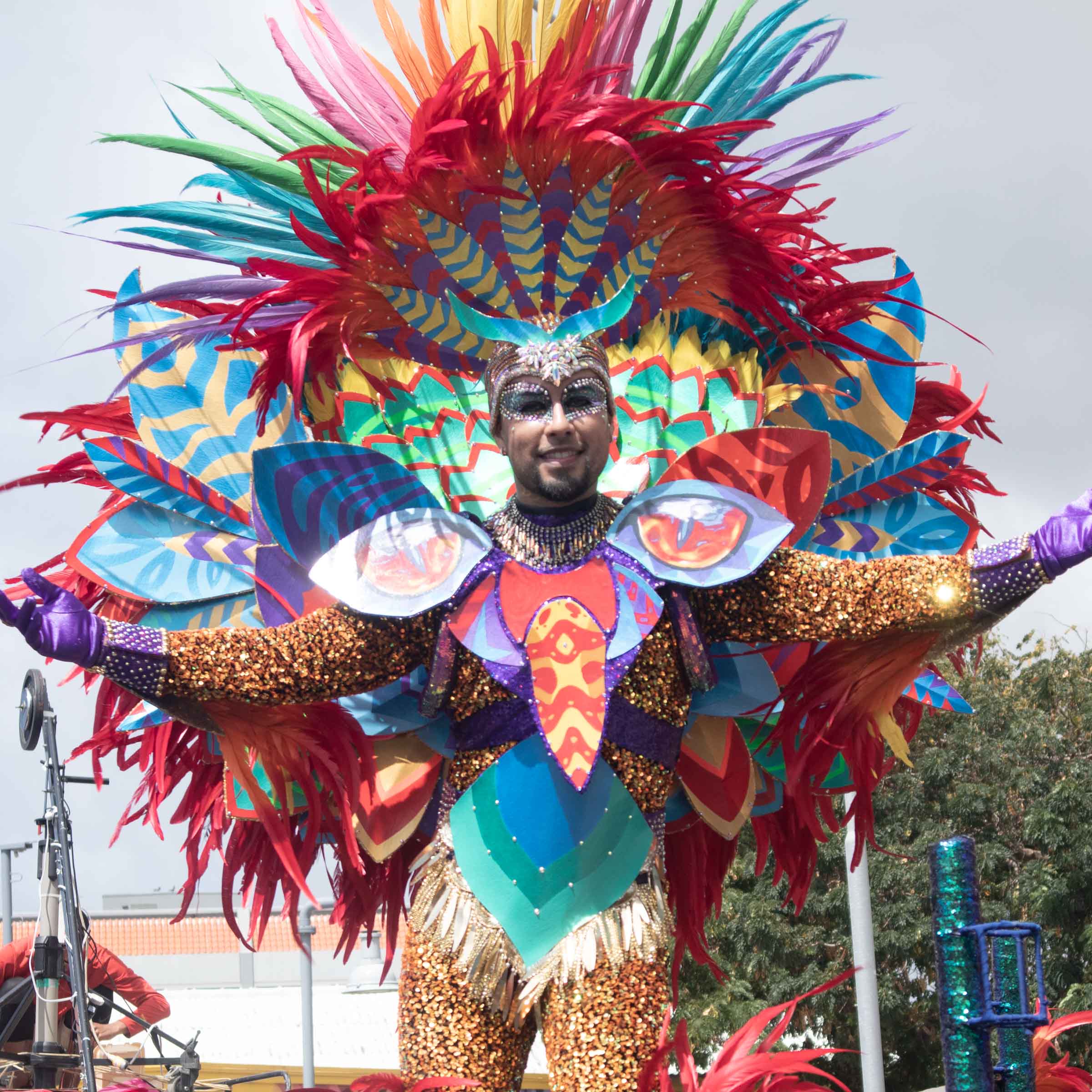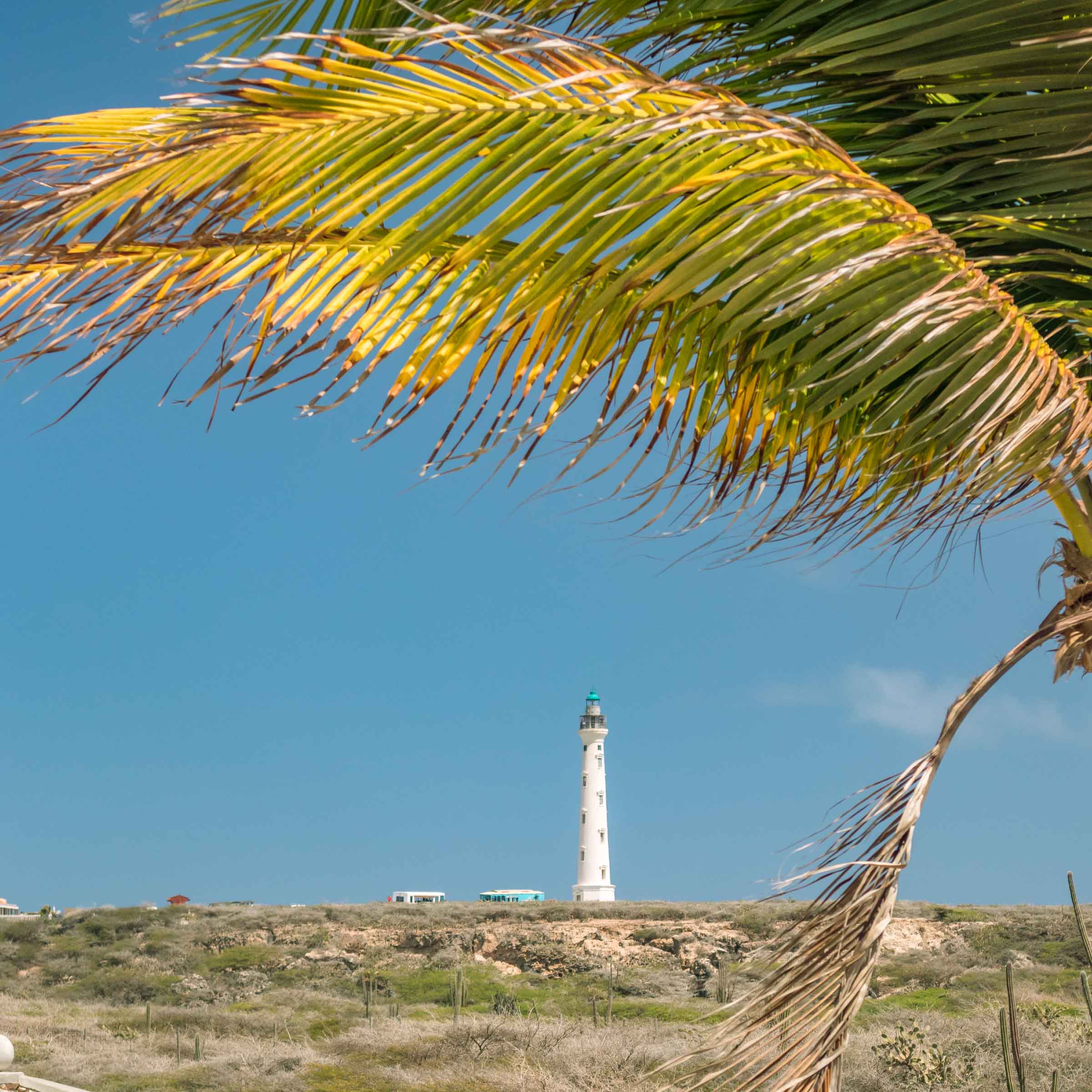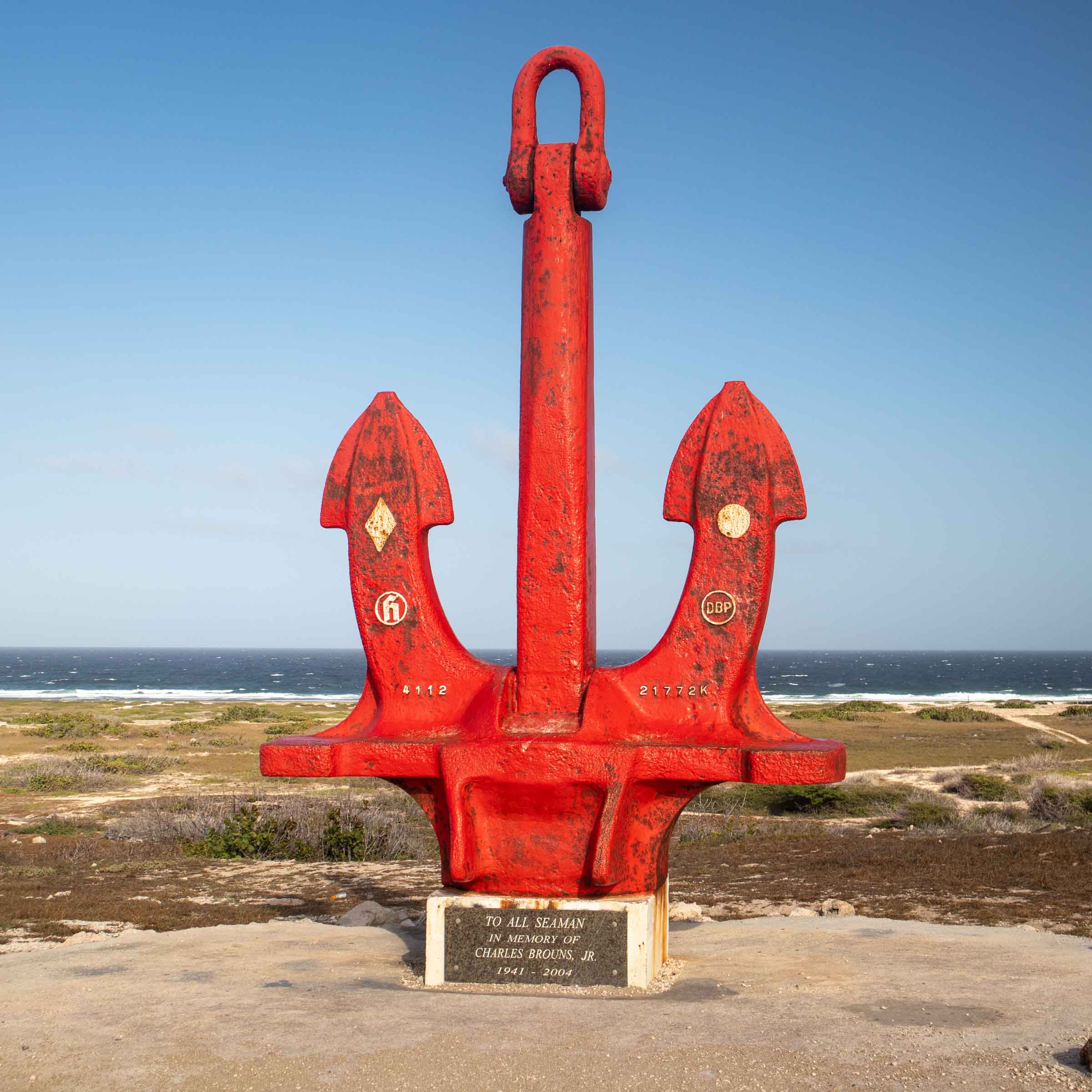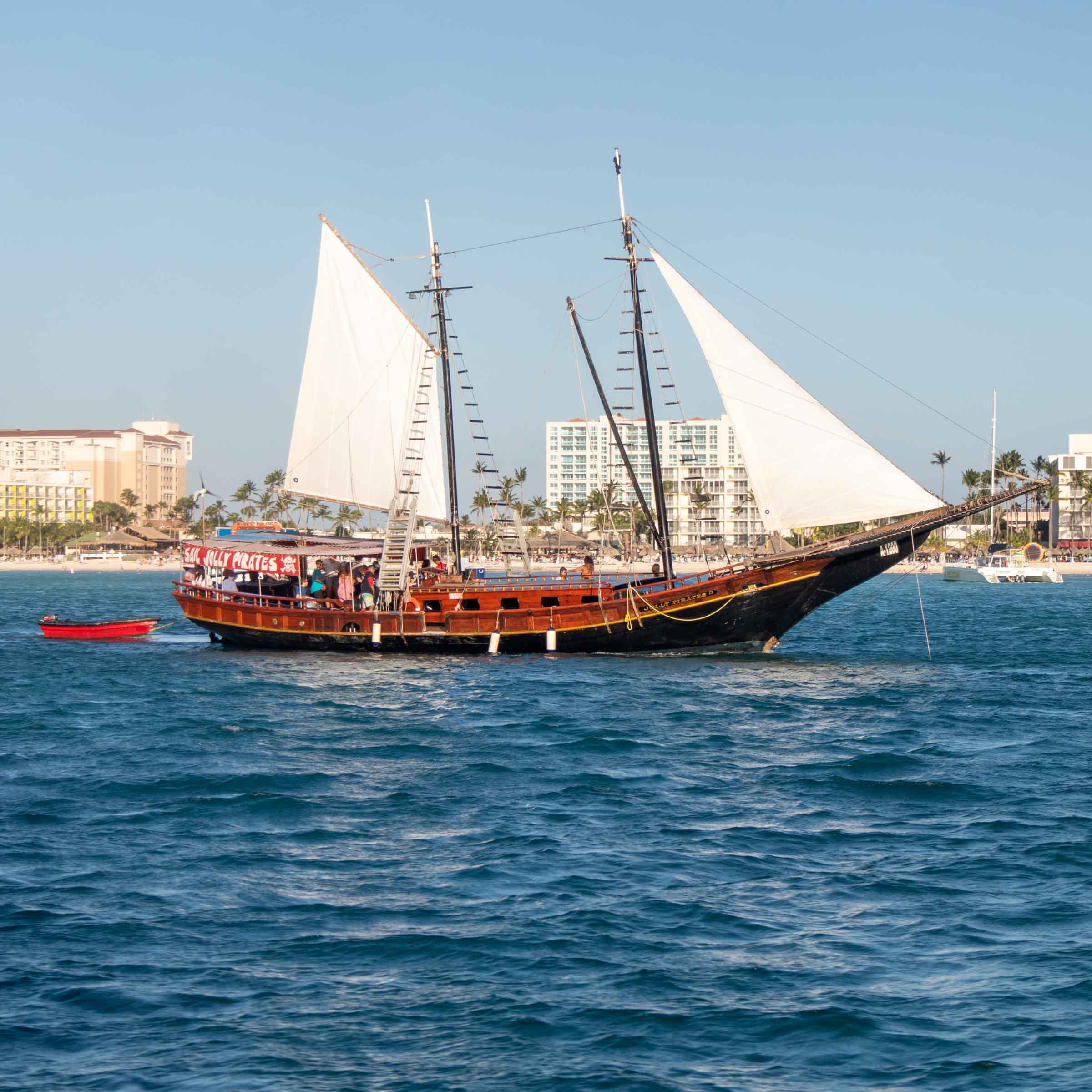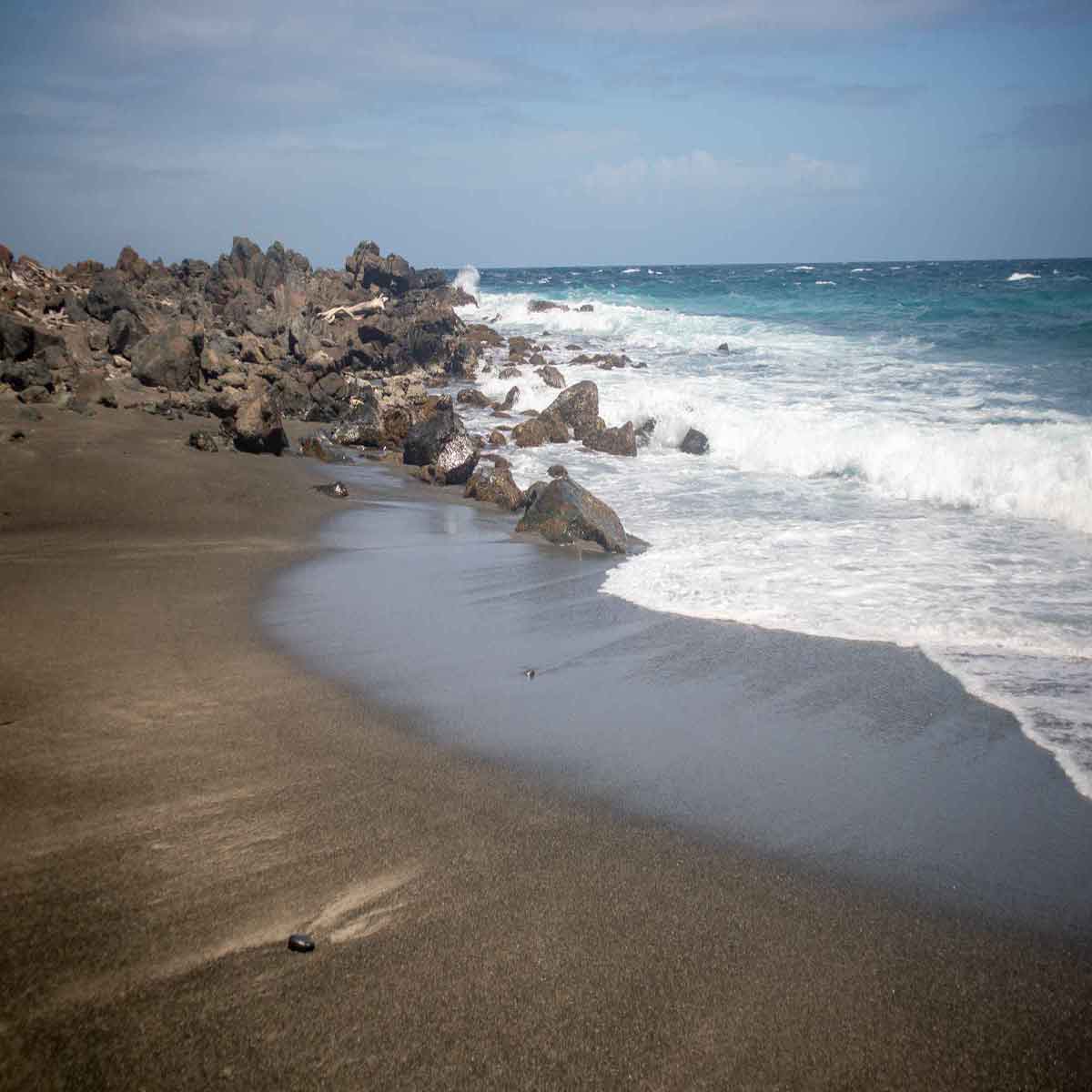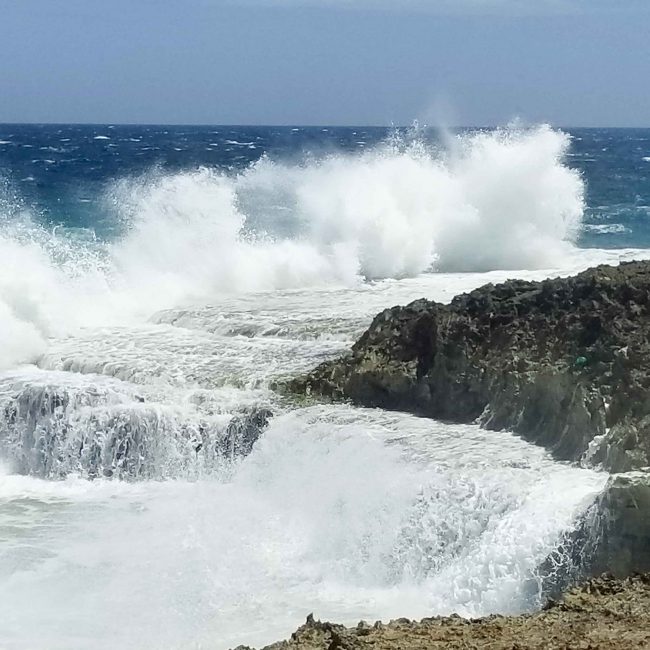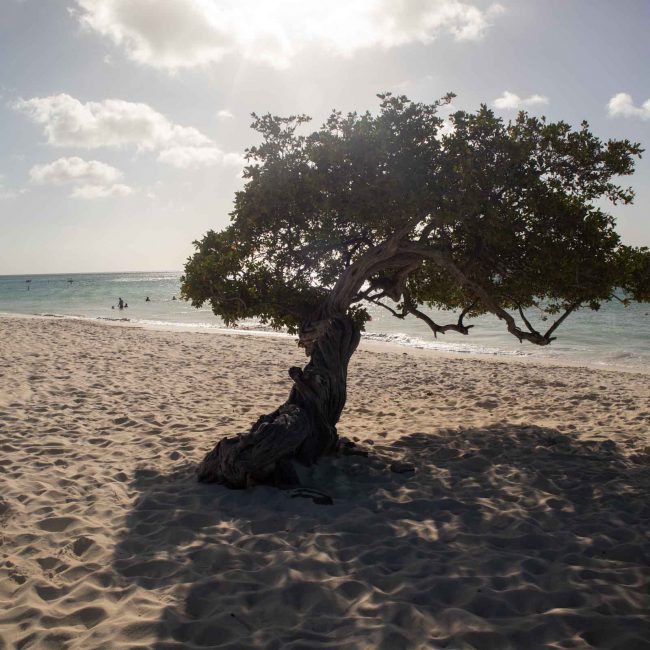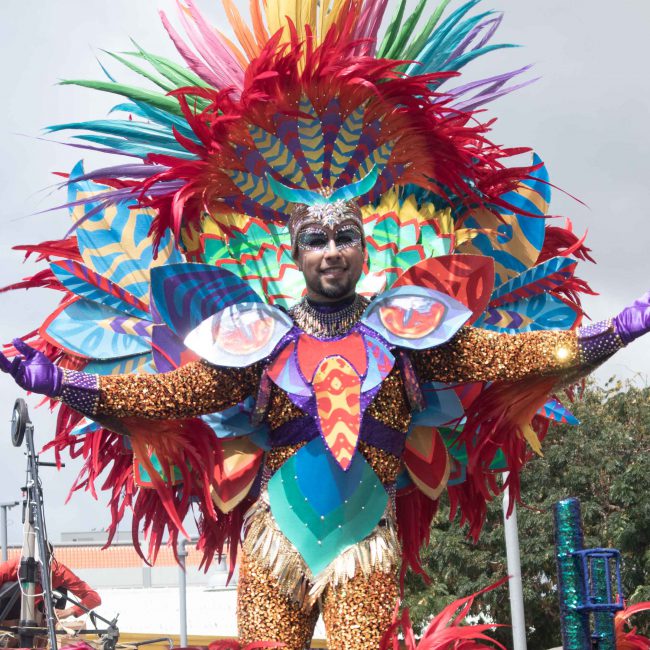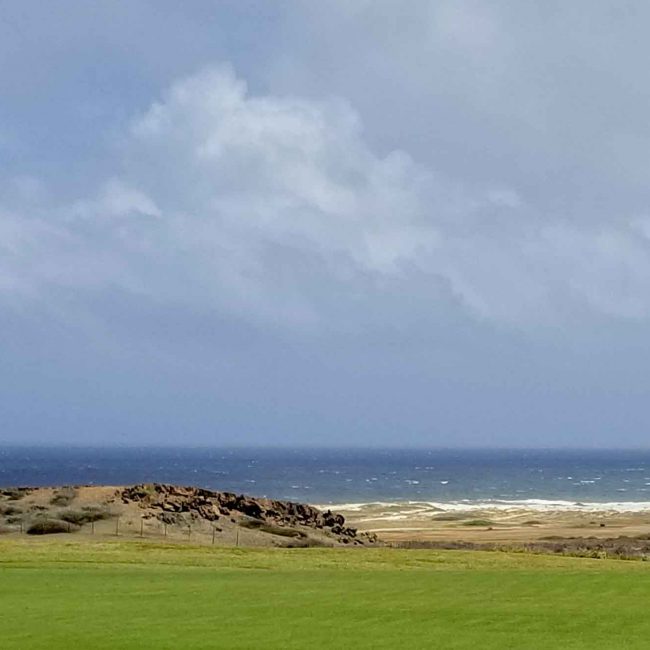Aruba
“One happy Island” is the slogan of this land of pristine beaches, stunning natural landscape and incredibly friendly locals. The allure of Aruba’s powdery white sand and vibrant azure sea attracts visitors from all over the world. As one of the safest destinations in the Caribbean, Aruba rates extremely low in both violent and petty crimes and is home to many top-rated resorts, hotels and an abundance of rental properties.
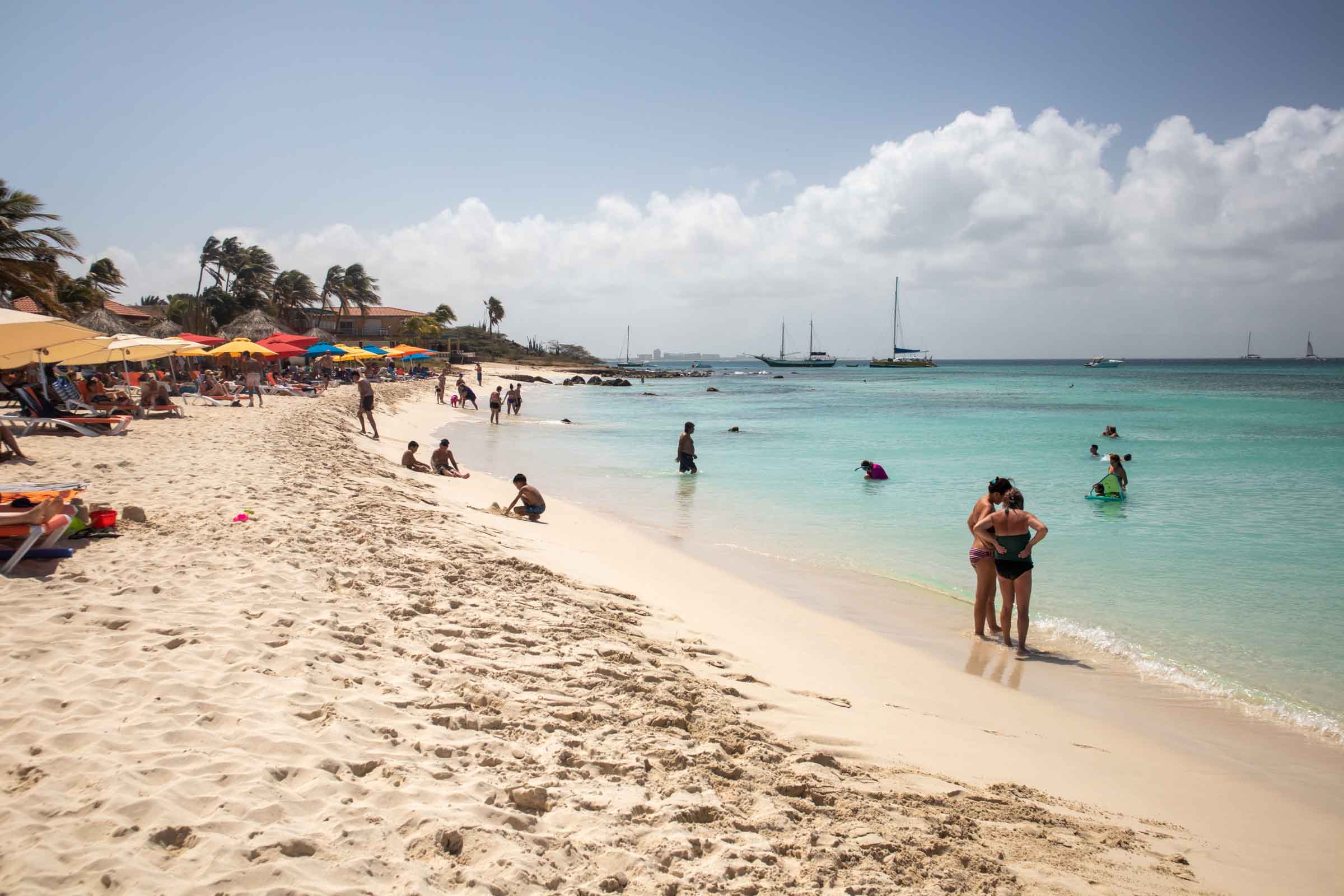
Still officially a territory of the Netherlands but home to 100 nationalities, there are many languages spoken in this Caribbean country. The official languages are Papiamento (a combination of Dutch, Spanish, Portuguese, and a few others) and Dutch, but most Arubans speak a minimum of four languages, including English and Spanish. The island is 21 miles (33 km) long, 6 miles (9 km) wide and has an area of about 75 square miles (193 square km) This little island paradise is LBGTQ friendly as it welcomes and celebrates diversity.

Aruba is the “A” in the ABC Islands. Sister islands are Bonaire, and Curaçao. All three are part of the Kingdom of the Netherlands, although they remain outside the European Union. Located in the southern Caribbean, Aruba is situated outside the hurricane belt and is the recipient of constant Tradewinds leaving Aruba with average temperatures of 29–32 Celsius or 84-89 Fahrenheit with an abundance of sunshine and a constant breeze. Its famous Divi Divi trees shaped by the winds are a natural compass, always pointing southwesterly.
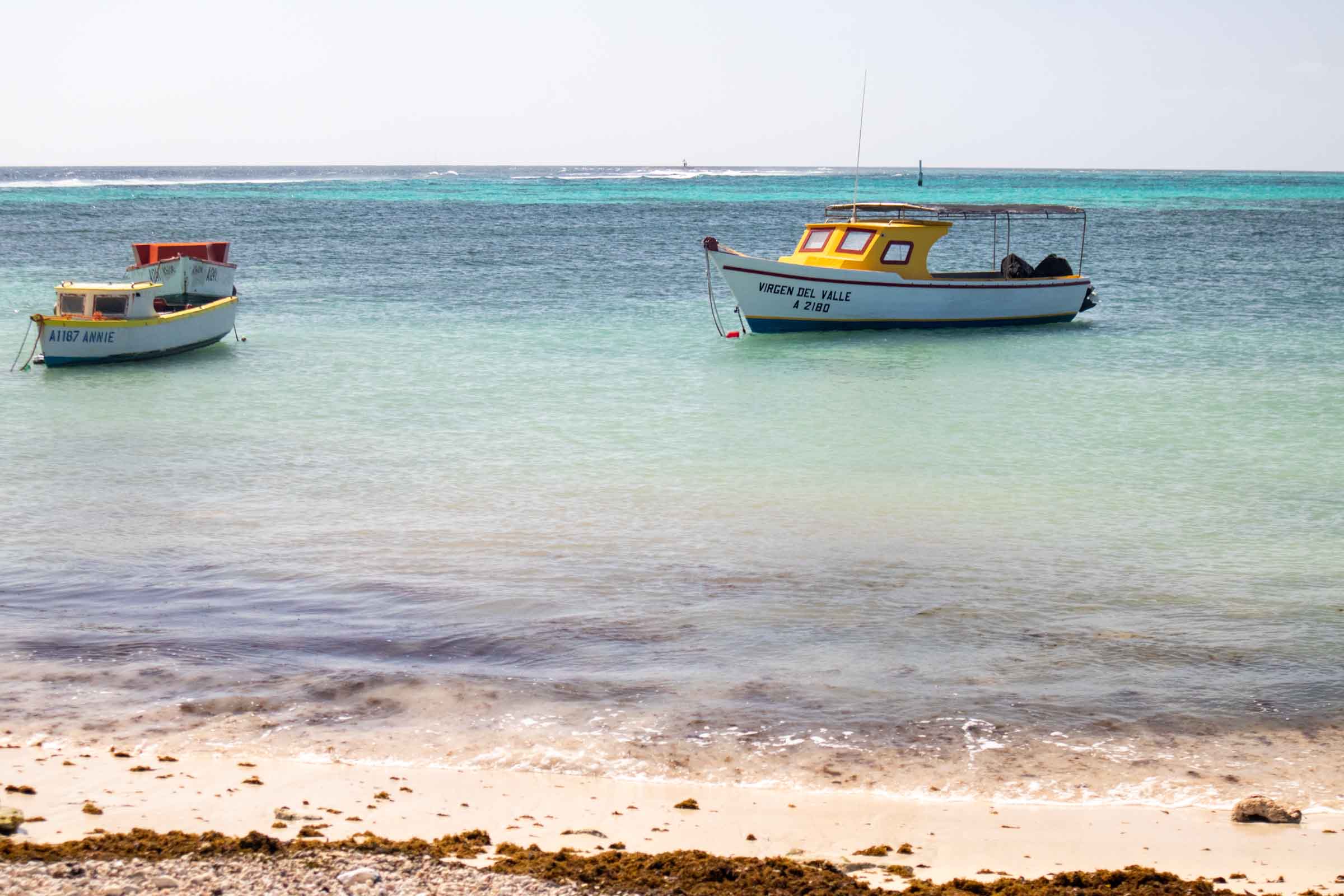
The cultural diversity is apparent in the island’s food scene. Global fusion is evident with the influence of Dutch, Creole, Spanish, Portuguese, Italian, Indian and Chinese cuisine.

What to Know Before You Go
The water is drinkable.
Aruba has very good quality desalinated water. They strongly discourage the use of plastic on the island. Pack a refillable water bottle to bring along on your excursions.
Traffic circles are abundant on the island.
If you plan to drive, make sure you are aware of the rules of driving in a traffic circle.
Drive on right-hand side of the road.
While you’re in Aruba, if you decide to drive, you will be required to drive on the right-hand side of the road, just as you would in North America and most western European cities. Curiously, you will find some “right-hand drive” vehicles on the road, which are designed to be driven on the left side of the road. Most of the traffic rules are very consistent with typical right-hand drive countries.
Aruba is windy.
Although some areas are more protected than others, there is always a breeze. The breeze can be strongest along the coastlines, often exceeding 30 km/hour.
The sun is intense.
Be sure to bring plenty of sunscreen. Sunscreen is extremely expensive on the island. Most shops sell sunscreen for $20 US or more for a 6oz bottle. You will go through a lot as you reapply throughout the day.
You can use US dollars.
The national currency on the island is the Aruban Florin, which is also known as the Aruban or Dutch Guilder, but US currency is widely used. The Florin is pegged or fixed, to the US dollar at a rate of 1.79. Use this link for current Florin exchange rates to other currencies.
Electricity – North American Standards.
While in Aruba you will find that the electrical grid and the commonly used household and commercial outlets largely adhere to typical North American standards using Type A and Type B outlets. These outlets are also commonly used across Central America, Japan, and China. The electrical grid provides 120V, 60 Hz power. Less commonly you may also see the use of some Type F outlets, which require a different adapter but still supply 120V at 60 Hz. As always, be sure to check the compatibility of your devices and small appliances that you plan to use while you’re in Aruba. It would be a bummer to damage your gear! For more information on planning for electrical compatibility while traveling see our post titled “Shedding Some Light on Electricity“.

ATM’s are readily available.
There are many banks in the cities and towns of Aruba. US or Aruban currency can be retrieved from them.
Food and other goods are quite expensive.
Being a desert island, Aruba is not able to grow any of its own produce. Goods are imported from the US, South America and Europe resulting in higher bills at the cash register.
Look for a service charge on your bill.
Tipping is customary for services in Aruba including restaurant and bar staff, taxis and tour guides. Check your bill to see if a service charge has already been included before adding your tip.
Arrive at the airport 3 hours before your scheduled departure.
The process of exiting the country by air is extensive. After checking in at your airline and checking your bag(s), you are directed back outside to line up to go through an initial passport and security check including shoe and belt removal as well as laptop and electronics from your carry on as you go through a metal detector– even if you have TSA precheck. If you are traveling to the US, you are then instructed to a room where you pick up your luggage and stand in line for US Customs and Immigration. Once cleared, you again stand in line for a second security checkpoint, again removing your shoes and belt and going through metal detectors. If no additional screening is requested, you will then be allowed to enter the terminal. This whole process can take two hours or more on busy travel days – specifically Friday – Sunday.
Ride-sharing services are not available
Ride-sharing services such as Uber and Lyft are not available on the island. Government-regulated taxis are available to help you get around if you need transportation. While Aruba is not a large island it is large enough to make walking to see the sights impractical. Consider renting a car while on the island, which will make it much more convenient to get where you’re going.
15 Things to Do in Aruba
1. Walk Along Eagle Beach
This little piece of heaven is where the crystal-clear Caribbean Sea washes up onto an unusually wide swath of white powdery sand. The 1 ½ mile stretch allows you to take that long morning or sunset stroll – alone or with that special someone.
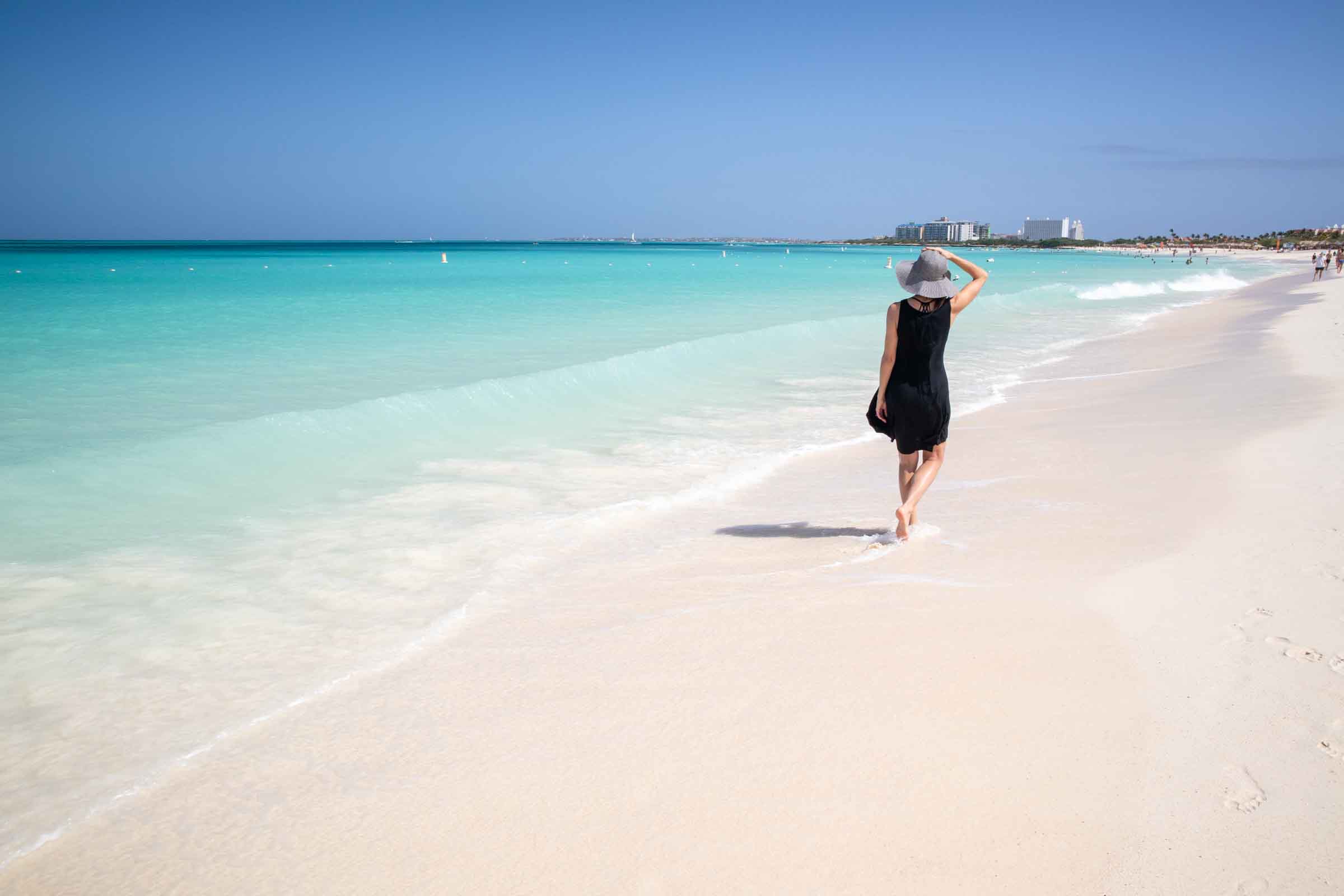
2. Hike in Arikok National Park
For the modest $11 entrance fee, you can discover the natural flora and fauna, diverse landscape, stunning rock formations, cultural, and historical components of the island. Tickets can be obtained through the Arikok National Park website. Call or email to book a free guided hike with a park expert.
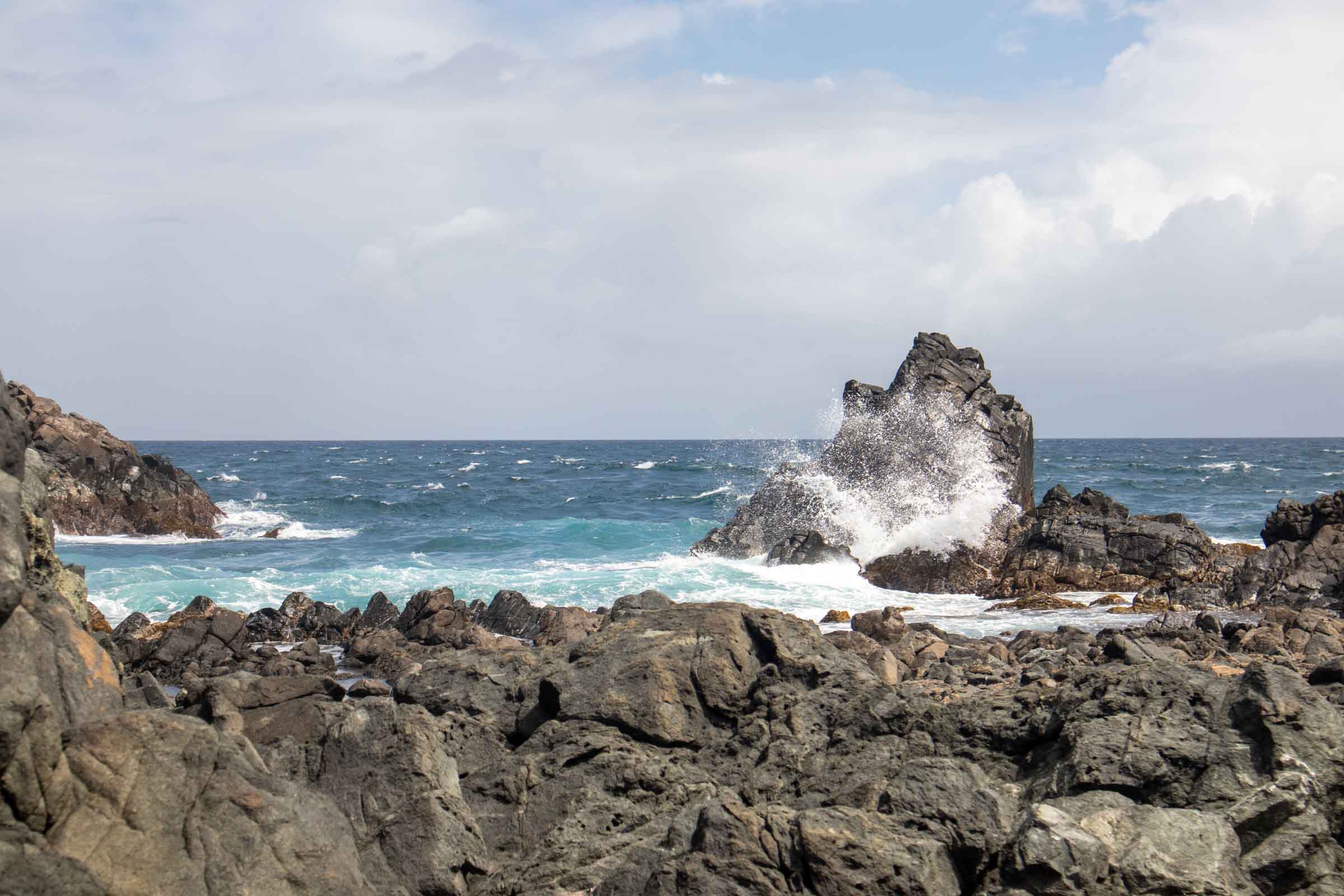
3. Visit the Natural Pool in Arikok National Park
A magnificent rock formation of volcanic stone along the coast surrounds this tranquil pool. The Natural Pool in Arikok is in a remote area that is difficult to access. To get to the pool you must travel via all-terrain vehicle, horseback, or on foot. Regardless of how you decide to travel through the park, be sure to visit this unique natural wonder.
4. Snorkel off Arashi Beach
Ideal for beginners, discover Aruba’s underwater marvels as you explore the reef located right off Arashi beach. This reef is home to elkhorn, brain corals, and sponges. The rocks are usually littered with starfish, Pufferfish, and schools of colorful baitfish as are pods of tiny squid and the occasional sea turtle. Bring your own gear or rent by the day or week. There are several rental locations, our favorite is Adventure Sports Aruba.
5. Swim and Sunbathe at Baby Beach
Close to the southern tip of the island and the town of San Nicolas, you can find this little patch of Caribbean paradise. With its large shallow swimming area protected in this expansive man-made lagoon, this island gem is a favorite amongst locals. The low-key vibe, and crystal clear water makes Baby beach beloved by swimmers and sun worshipers alike.
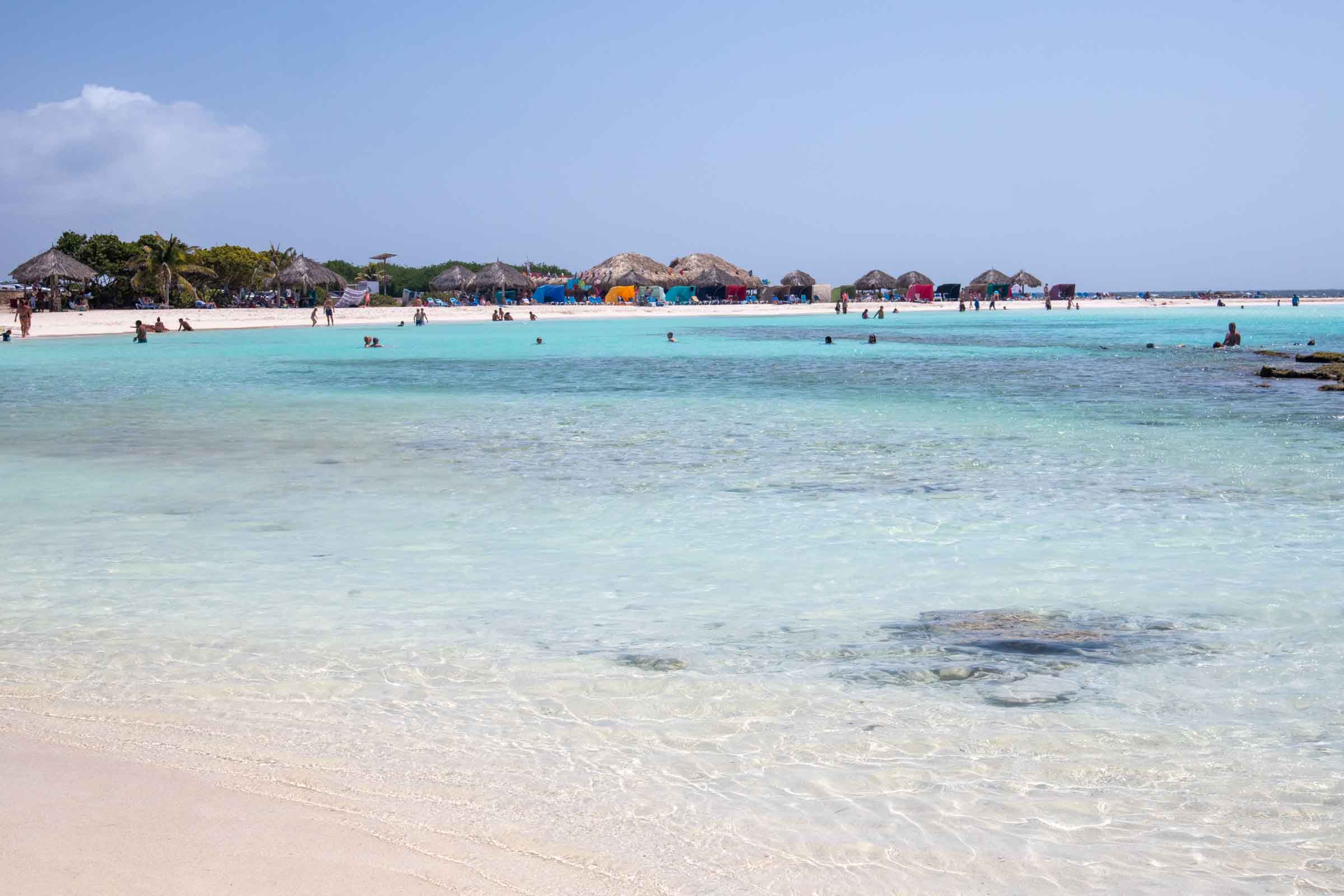
6. Enjoy a Sunset Dinner Cruise
Appreciate the view of Aruba’s coastline from the water as you are treated with champagne, an open bar, delicious buffet and mother nature’s spectacular end of the day salute. A number of operators offer various tours. We really enjoyed our Luxury Wine and Dinner Sail from the pier on Palm Beach.
7. Celebrate Carnival
Aruba’s biggest party of the year is a month-long celebration with events beginning in January and continuing into late February with vibrant parades, street parties, electrifying music, colorful elaborate costumes, dance, and other local festivities. If you are in Aruba during the parade season, be sure to attend one of the grand parades in either Oranjestead or San Nicolas. See our post for more about Aruba’s Carnival.

8. Take a Caribbean Cooking Class
If you love to have fun in the kitchen, join Chef Kari in hers. She is an international food editor who has set up the Chef and Steward cooking school in her traditional Aruban Cunucu home. With small groups of 8 or less, she will guide you through the preparation of some delicious traditional Caribbean dishes. You then reap the benefits of your hard work as you enjoy the scrumptious lunch with Kari and your fellow students. Book your cooking class with Keri.
9. Visit San Nicolas
This multicultural town attracted people from many nations as the oil refinery opened nearly 100 years ago. Now, home to magnificent street murals, this artisan town boasts unique shops, restaurants, art galleries, and Baby Beach.
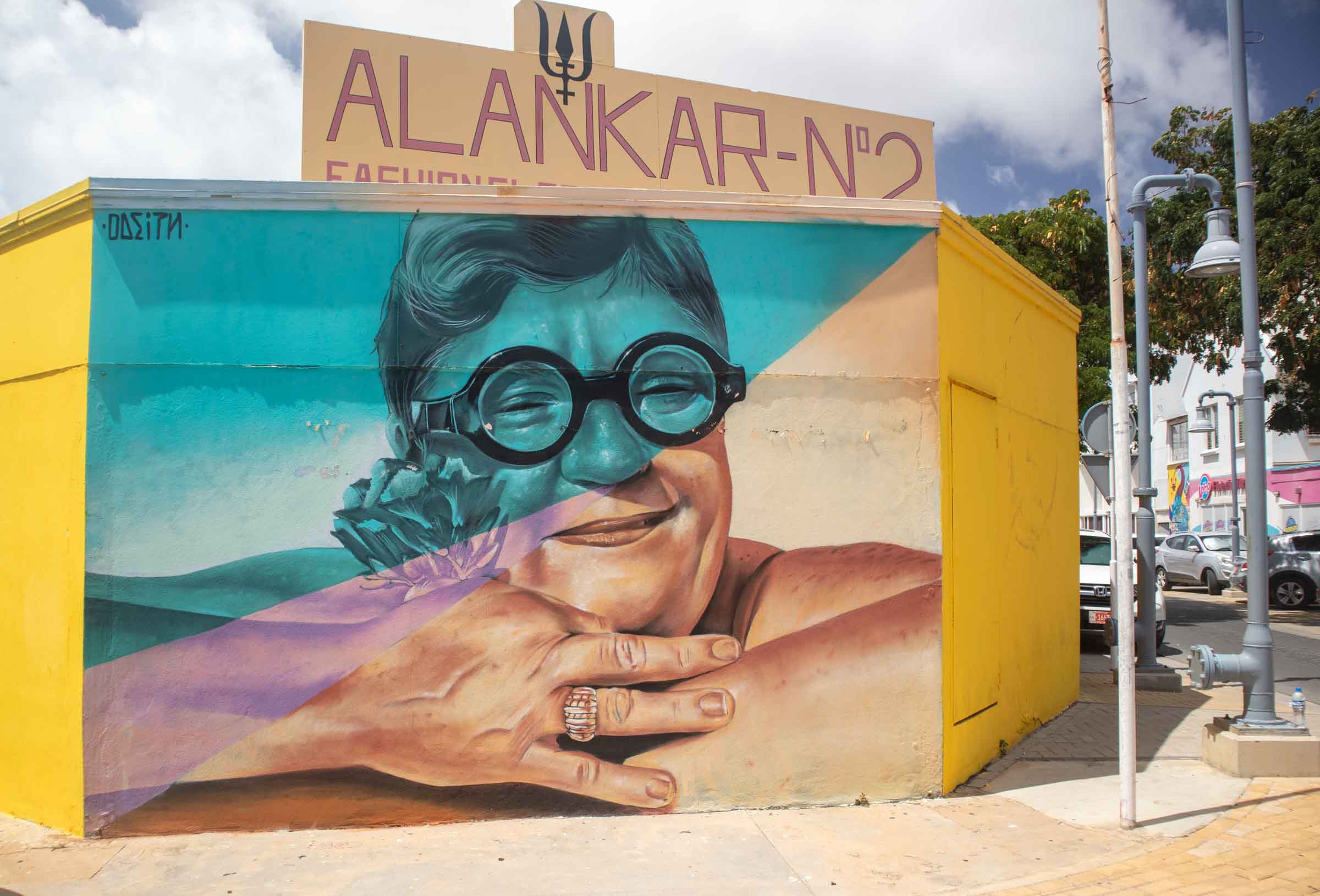
10. Party in Palm Beach
If you like to be where the action is, Palm Beach is the place for you. Home to most of the island casinos, resorts bars, and nightclubs, you can eat, sip cocktails and dance the night away at one of the many lively venues.
11. Talk a Walking Food Tour
What better way to learn about a culture than through food. Nibble your way around Oranjestad with a knowledgeable guide as he or she explains how Aruba’s cuisine has been influenced by so many nations. Consider Aruba Walking Tours while you’re on the island.
12. Visit Oranjestad
Visit the capital city of Aruba with shopping, restaurants, casinos, bars, and cafes. Live music plays most nights in the Renaissance marketplace. Spend some time walking the marina, browsing the shops, and visiting the museums.
13. Play a Round at Tierra del Sol Golf Course
On the PGA tour, and known for being a particularly challenging and picturesque golf course, Tierra del Sol is a windy par 71 that will test your golf game and astonish you with it’s views. Check out our post on Aruba’s golf scene for more details.
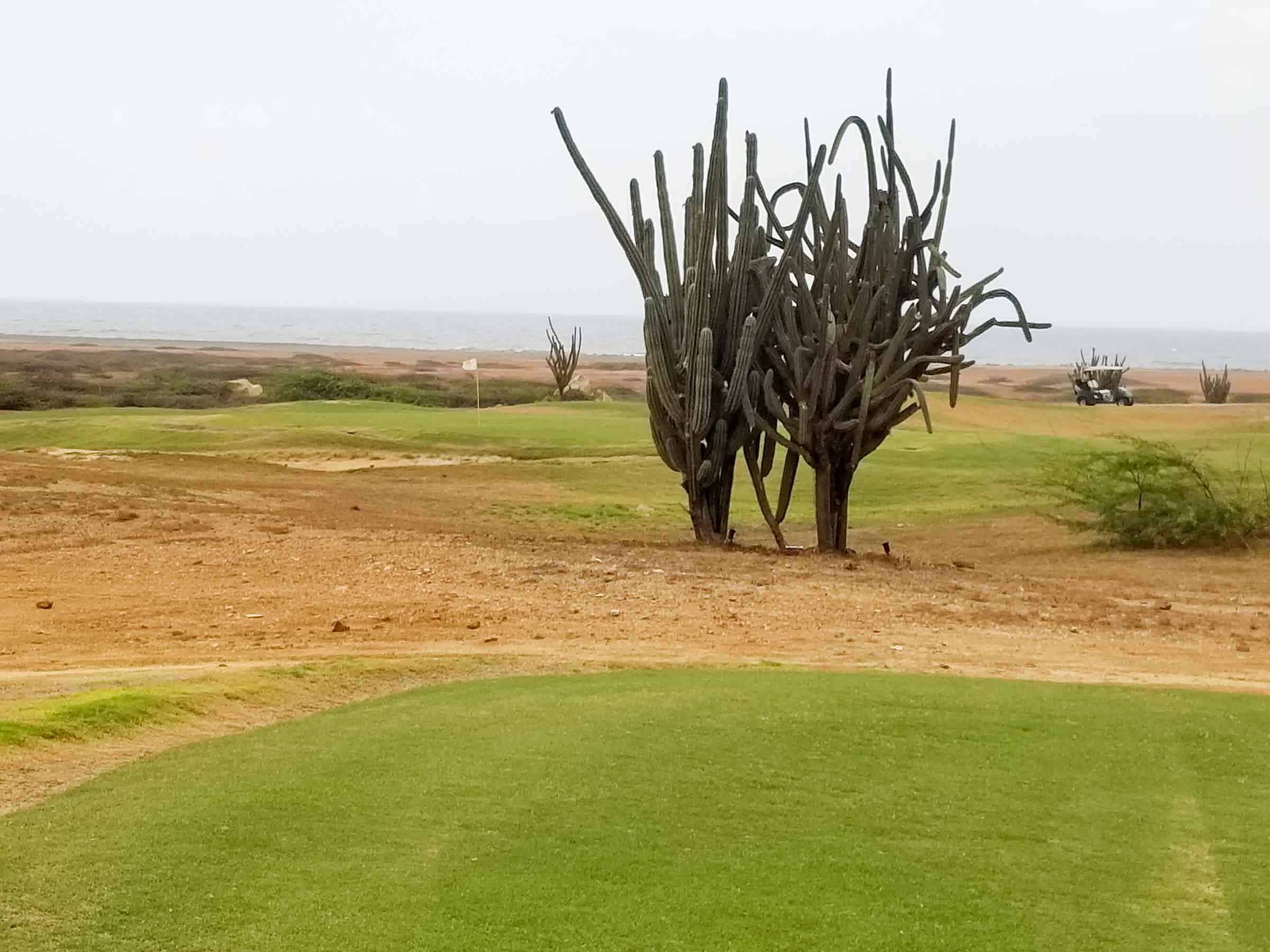
14. Enjoy Dinner with a Sunset View
Treat yourself to dinner at one of Aruba’s many west-facing open-air beachfront restaurants. Sip cocktails as you listen to the waves crash onto the shore and watch the sun setting in the distance. Make a reservation at Matthews.
15. Visit and Climb the California Lighthouse
The California Lighthouse was built in 1910 to warn ships of the rocky coastline of the island. Located near Arashi Beach, the lighthouse was named after the S.S. California, which was wrecked nearby in 1891. Climb the 123 steps to the top for one of the best panoramic views on the island.
Our Other Favorites on the Island
Check Out Some Of The Other Great Things To Do During Your Stay
Margaritaville
Enjoy what is perhaps one of the most iconic cocktails, while enjoying an ocean view at the West Deck. Certainly, our favorite margaritas on the island.
Taste Aurbean Cerveche
Ceviche is a raw fish dish, prepared by marinating the seafood in lime or lemon juices. If you enjoy seafood you will absolutely love the freshness and tropical flavors of the Ceviche at the Waters Edge 12 N restaurant along Eagle Beach.
Enjoy the Fresh Fish
Zeerovers is a favorite with the Aruban locals, serving a variety of delicious fish and seafood selections in a casual atmosphere. While the decor is nothing special, the quality of the food most certainly makes up for it.
Have a Bowl of Fish Stew
Casa Tua, which is perhaps best known for their thin crust pizza, has excellent fish and seafood stew. Be sure to order the smaller portion as it’s nearly as big and the large and less expensive.
Have a Relaxing Beachside Sunset Dinner
Matthews Beachside Restaurant, which is directly on Eagle Beach, serves excellent food from a menu with a wide variety of choices to satisfy nearly any taste. Grab a small beachside table to enjoy a romantic dinner or just hang with your crew.
Hang with an Island Guide
If you like to be active and are looking for an expert to hike with you around Aruba’s scenic landscape including caves, the national park, and the marine park, Rambo is your guy. His national pride is evident as he tells you tales of Aruba’s past present and future while teaching you about the island’s flora and fauna. You can reach Rambo Flanegin via phone at 279-743-0018 or drop him an email at [email protected]
Other Aruba Highlights
-
Arikok National Park
A natural gem in a sea of Caribbean experiences, the Arikok national park offers a diverse ecology featuring desert landscapes, ocean coastlines, and many miles of hiking trails with unique flora and fauna.
-
Arubian Beaches
Aruba is home to some of the world's most beautiful beaches. With a diverse collection of beach terrain, there is something for everyone to enjoy. From pristine white sands to snorkelling, and even black lava sand.
-
Carnival in Aruba
Aruba's Carnival can best be described as a free-spirited celebration of music, friendship, love, and the Caribbean way of life. A party on an unrivalled scale, this celebration is a feast for your eyes, ears, and your taste buds.
-
Desert Golf in Aruba
Golf in Aruba presents a unique combination of beautiful scenery and challenging conditions. The three courses on the island provide an interesting experience for golfers of all levels with a variety of cost and quality.
February 13, 2020

